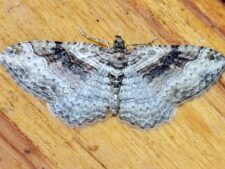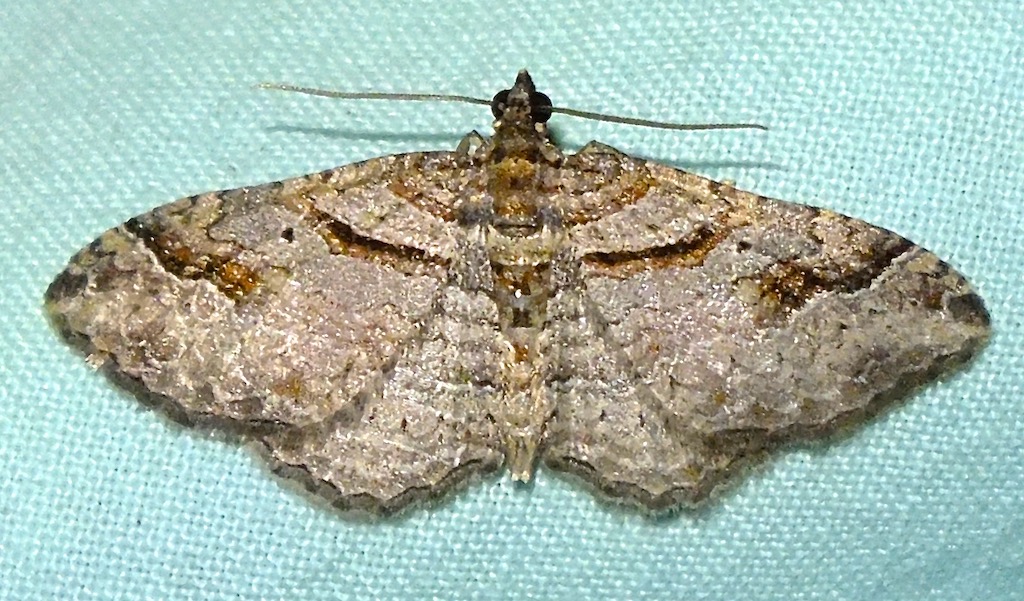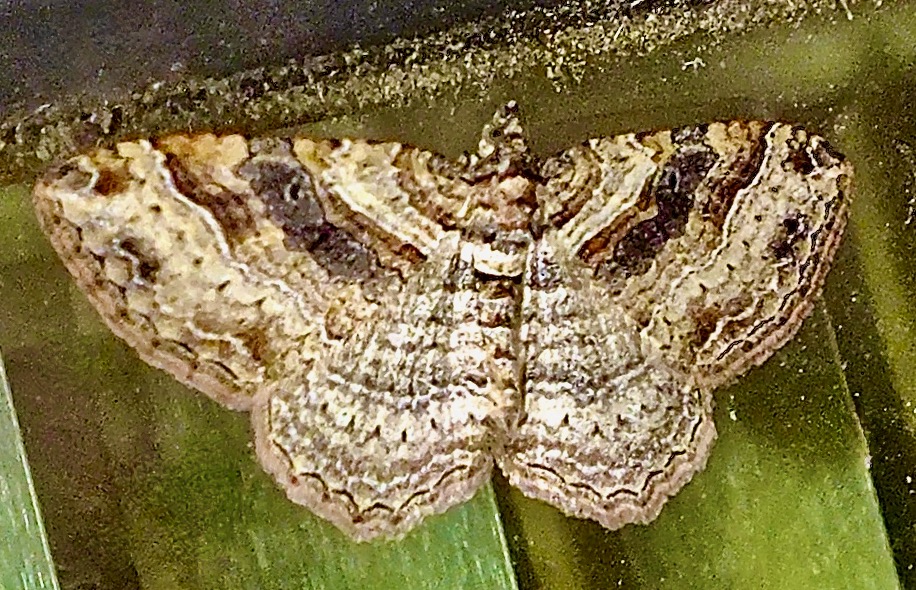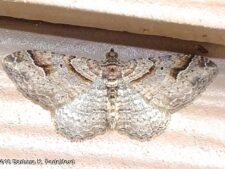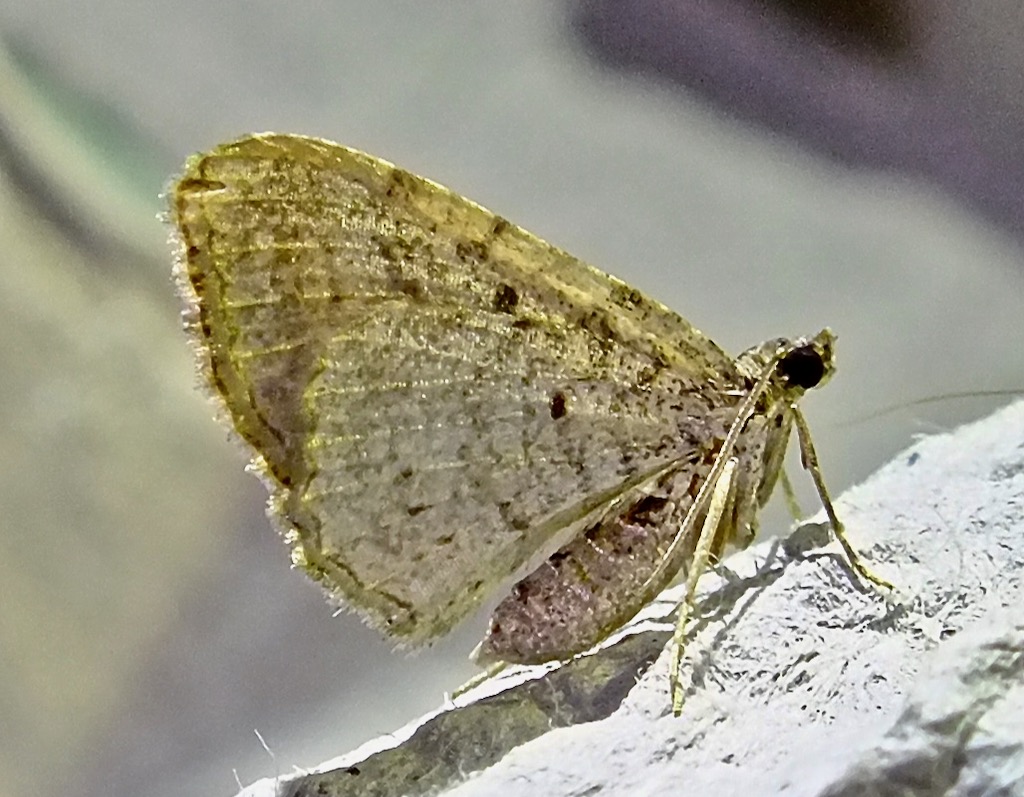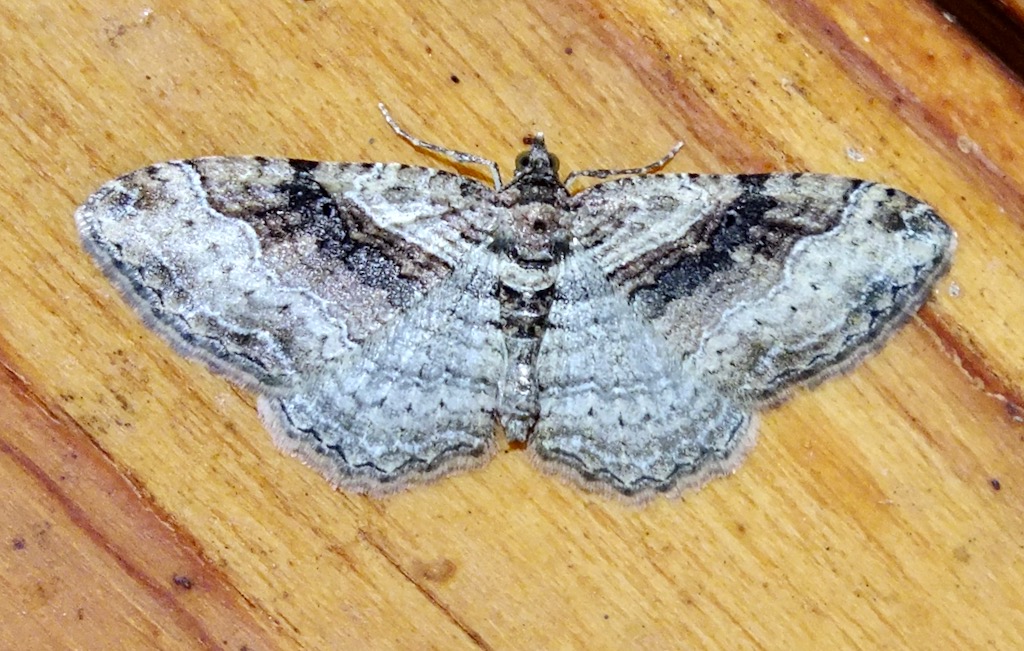
This moth has a wingspan of approximately 1 inch. Sexually dimorphic: male wings are mostly gray and female wings have dark median area. The background of both the forewings and hindwings is gray with many fine broken and scalloped lines. There is a curved, wide black line on the upper part of the forewing, and a heavy, wavy black line near the end of the forewing. This species was identified by volunteer experts at BugGuide.
This moth is common in our area. It is widespread throughout North America.
The caterpillar is slender and elongated. It is dark brown above and light brown below. The larval foodplants, which are low growing, include knotweed and smartweed.
Disclaimer: The content of NatureSearch is provided by dedicated volunteer Naturalists of Fontenelle Forest who strive to provide the most accurate information available. Contributors of the images retain their copyrights. The point of contact for this page is: Babs Padelford.

